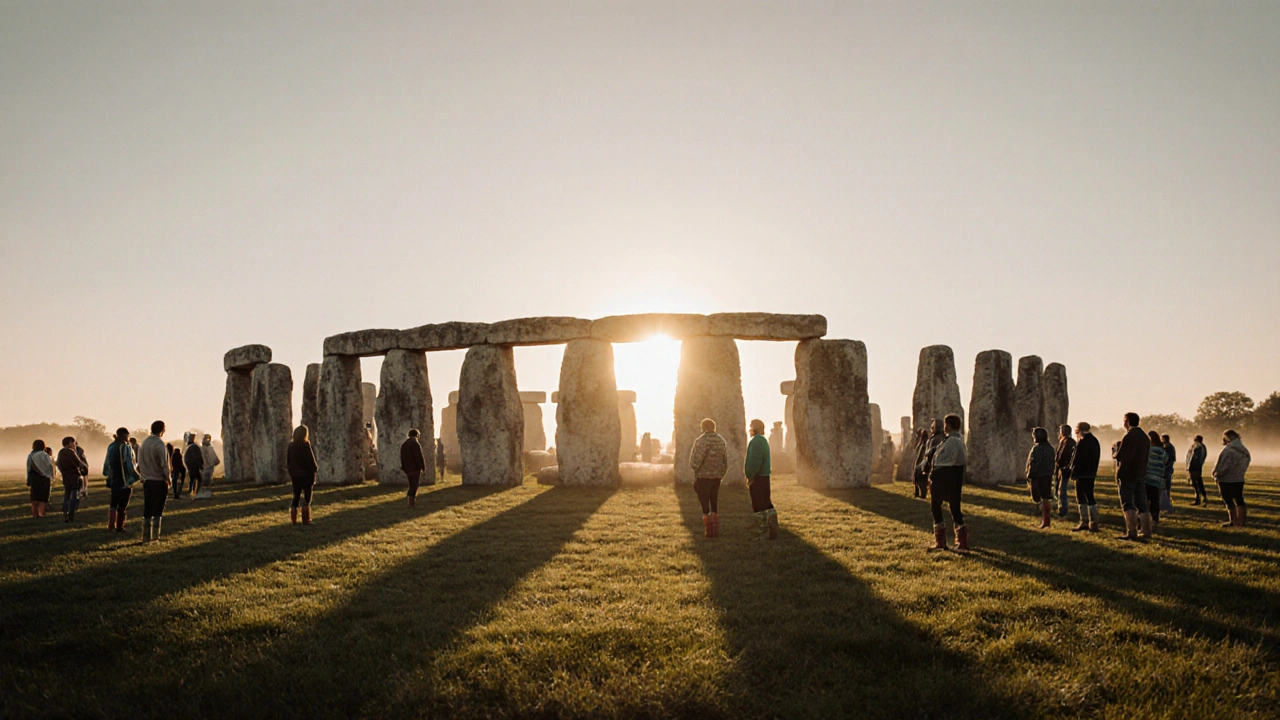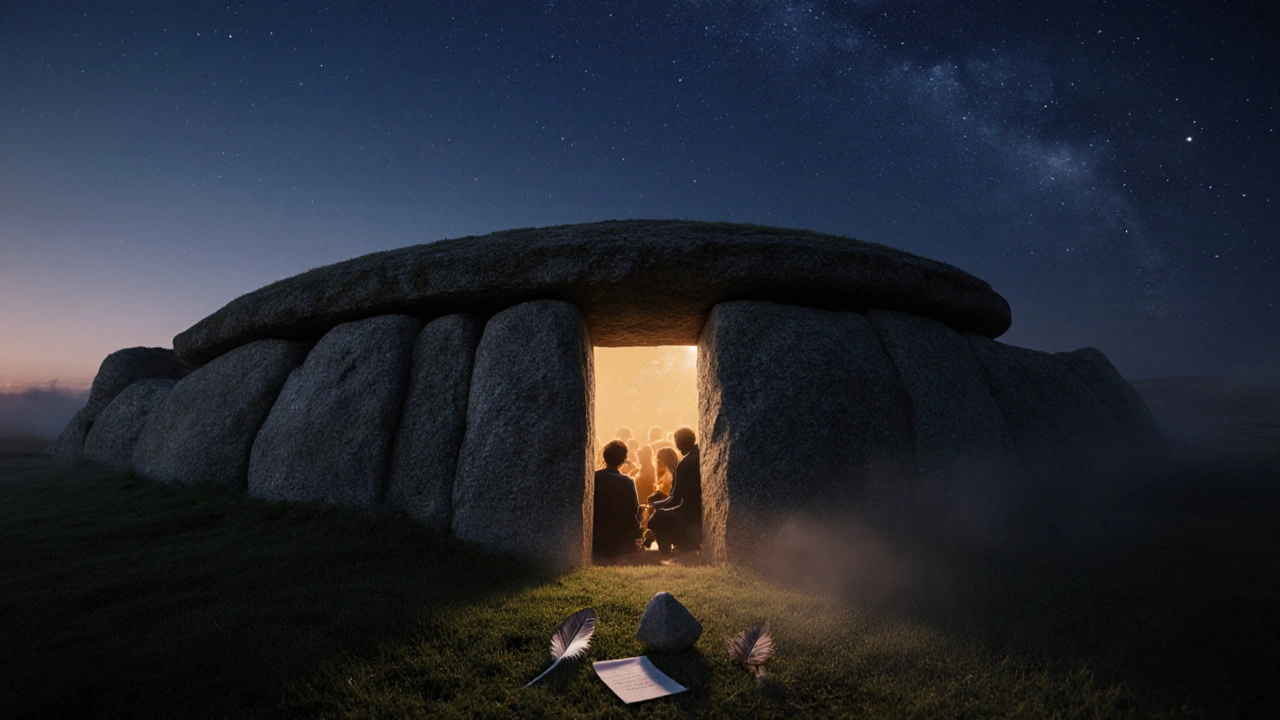Unearth the Past: The Most Captivating Archaeological Sites Near London

When you live in London, you’re surrounded by layers of history-cobblestone alleys beneath modern cafés, Roman walls hidden behind Bank tube station, and Saxon burial mounds tucked into Richmond Park. But what if you wanted to step away from the city’s noise and actually walk where ancient Britons once lived, prayed, or buried their dead? Some of the most captivating archaeological sites in the UK aren’t just far away-they’re within easy reach of London, waiting to be explored on a weekend trip.
Stonehenge: The Icon That Still Defies Explanation
Just 90 minutes by train from Waterloo Station, Stonehenge isn’t just a postcard-it’s a 5,000-year-old puzzle. Archaeologists still debate whether it was a temple, an astronomical calendar, or a burial ground for elite families. What we know for sure: the bluestones were transported over 140 miles from Wales, and the site aligns with the summer solstice sunrise. Visit in June and you’ll see hundreds gathered at dawn, many in woolly jumpers and wellies, sipping tea from thermoses as the sun crests the Heel Stone. The English Heritage visitor centre has interactive displays showing how the stones may have been moved using sledges and ropes. Skip the coach tours from London-take the direct train to Amesbury and catch the free shuttle. It’s less crowded, and you’ll feel the wind on the Salisbury Plain like no one’s been there for centuries.
Hadrian’s Wall: Rome’s Northern Edge
Forget Rome. The real Roman empire stretched into northern England. Hadrian’s Wall, built in 122 AD to keep out the Picts, runs for 73 miles from Wallsend near Newcastle to Bowness-on-Solway. The best stretch for a day trip from London? Housesteads Roman Fort. Take the train from King’s Cross to Newcastle (under 3 hours), then hop on the 886 bus to the site. Walk the stone foundations of a Roman barrack block, then peer into the latrine-still intact, with 20 seats over a drainage channel. You’ll find the original Roman altar to the god Mars, and the museum holds the world’s largest collection of Roman altars. Locals call it ‘Rome’s last stand.’ And if you’re lucky, you’ll spot a red deer grazing near the ramparts, just as they did 1,800 years ago.
Cheddar Gorge and Gough’s Cave: When the Dead Were Kept Close
It’s not just temples and walls. Sometimes, the past is buried in caves. Cheddar Gorge, in Somerset, is home to Gough’s Cave, where archaeologists found the 14,700-year-old remains of ‘Cheddar Man’-Britain’s oldest complete human skeleton. His skull, displayed at the Natural History Museum in London, shows signs of ritual cannibalism: cut marks on the bones, skulls used as drinking vessels. The cave itself is a breathtaking limestone labyrinth, with stalactites dripping like frozen rain. Take the train from Paddington to Cheddar (about 2 hours), then walk the gorge trail. You’ll pass the same cliffs where early Britons hunted mammoth and reindeer. The on-site museum has a replica of Cheddar Man’s face, reconstructed from his skull. It’s eerie. And unforgettable.

West Kennet Long Barrow: The Stone Age Tomb You Can Walk Into
Just outside Avebury, a 15-minute drive from the Stonehenge visitor centre, lies West Kennet Long Barrow. Built around 3650 BC, it’s one of the largest and best-preserved Neolithic tombs in Britain. Unlike Stonehenge, you can walk right inside. The chamber is low and narrow, lined with massive sarsen stones. Inside, you’ll find the remains of over 40 people-men, women, children-placed here over generations. Locals say the air feels different inside. Some leave small offerings: a stone, a feather, a note. You won’t find crowds here. Just silence, damp earth, and the weight of time. It’s a place to sit and think-not to snap selfies. Bring a warm coat. Even in summer, the tomb stays cold.
Verulamium: Roman St Albans, Just Outside London
Not everyone needs to travel far. In St Albans, barely 20 miles from King’s Cross, lies Verulamium-one of Roman Britain’s largest towns. You can walk along the original Roman street grid, still visible under grassy fields. The city’s amphitheatre, rediscovered in the 1930s, seats 5,000. Archaeologists found a mosaic floor from a wealthy Roman’s villa, now displayed in the on-site museum. It’s free to enter the park. Kids can dig for replica artefacts in the archaeology playground. The town’s market square sits right on top of the old Roman forum. Grab a pie from the St Albans Pie Company, then sit on the ruins and imagine gladiators clashing where your coffee cup now rests.
Orkney’s Neolithic Sites: A Journey Worth the Trip
If you’ve got a week and a taste for the wild, Orkney is the ultimate archaeological pilgrimage. The islands hold Skara Brae-a 5,000-year-old village older than Stonehenge, preserved under sand dunes. You can see stone beds, dressers, even hearths. Nearby, the Ring of Brodgar stands like a stone circle from another world, with 27 remaining monoliths encircling a sacred space. The Ness of Brodgar, a recent excavation, revealed a massive ceremonial complex with painted walls and ritual animal bones. Fly from London to Kirkwall (easy with Loganair), rent a car, and drive the single-track roads. You’ll see no traffic lights, no fast food chains-just sheep, sea mist, and history carved into the land. It’s not a day trip. It’s a reset.

What to Bring and How to Plan
These sites aren’t theme parks. They’re quiet, often remote, and weather-dependent. Pack:
- Waterproof boots-mud is part of the experience
- A warm layer-even in July, wind sweeps across ancient hills
- A National Trust or English Heritage membership-saves you £15+ per site
- A copy of ‘Britain’s Ancient Tracks’ by Tessa Hill-it’s the best guidebook for walking between sites
Plan your trips around off-peak seasons. Late September or early May means fewer tourists, clearer skies, and the chance to talk to local archaeologists who still work on digs. Many sites host weekend events-like Roman reenactments at Caerleon or solstice gatherings at Avebury. Check the English Heritage calendar. You might catch a live excavation.
Why This Matters in Modern London
Living in London, it’s easy to feel like history is something you see in museums-behind glass, curated, safe. But these sites remind you: we’re standing on top of people who lived with less, knew the stars better, and buried their dead with care. They didn’t have apps to find the nearest café. They had the land. And they shaped it.
When you visit one of these places, you’re not just sightseeing. You’re connecting. To the soil under your feet. To the people who walked here before the Tube, before the pub, before the Starbucks on every corner. And maybe, just maybe, you’ll leave London a little quieter in your mind.
Can I visit these archaeological sites with children?
Yes, many are family-friendly. Verulamium has a hands-on archaeology dig pit for kids. Stonehenge’s visitor centre has interactive exhibits designed for young visitors. Cheddar Gorge offers guided cave tours with torches and stories. Just bring snacks, sturdy shoes, and patience-some sites require walking over uneven ground. Avoid bringing toddlers to West Kennet Long Barrow; the low entrance isn’t suitable for small children.
Are these sites accessible for wheelchair users?
Accessibility varies. Stonehenge has a paved path to the circle and wheelchair-accessible toilets. Verulamium’s museum and park are fully accessible. Cheddar Gorge’s cave tour is not wheelchair-friendly due to narrow passages. West Kennet Long Barrow has a steep, uneven path to the entrance. Always check the English Heritage or National Trust website before visiting. Many sites offer free mobility scooters on request.
Do I need to book tickets in advance?
For Stonehenge, yes-especially in summer and during solstice. Book through the English Heritage website. For Verulamium and West Kennet Long Barrow, no booking is needed. Orkney sites require advance tickets for guided tours, especially in winter. Always check opening times-some sites close early in winter or after bad weather.
What’s the best way to get to these sites from London?
Train is the easiest. Stonehenge: direct train to Amesbury from Waterloo. Hadrian’s Wall: King’s Cross to Newcastle, then bus. Verulamium: direct train from King’s Cross to St Albans. Cheddar Gorge: Paddington to Cheddar. Orkney: fly from London City or Heathrow to Kirkwall. Renting a car gives more flexibility but requires planning for rural roads and parking.
Are there any free archaeological sites near London?
Yes. The Roman walls at London’s Museum of London (near Barbican) are visible in situ. The ancient trackway at Box Hill in Surrey is free to walk. The Iron Age hillfort at Old Sarum is accessible via public footpaths. Many sites managed by local councils or the National Trust offer free entry on certain days-check their websites. You don’t always need to pay to touch history.
Where to Go Next
After you’ve walked through these ancient places, consider exploring lesser-known spots: the Neolithic burial chamber at Bryn Celli Ddu on Anglesey, the Roman baths in Bath, or the standing stones at Callanish on Lewis. Each one adds another thread to the story of Britain-long before the Tube, before the Blitz, before the capital became what it is today. The past isn’t gone. It’s still here, under your feet, in the soil, in the wind. All you have to do is step off the pavement and listen.